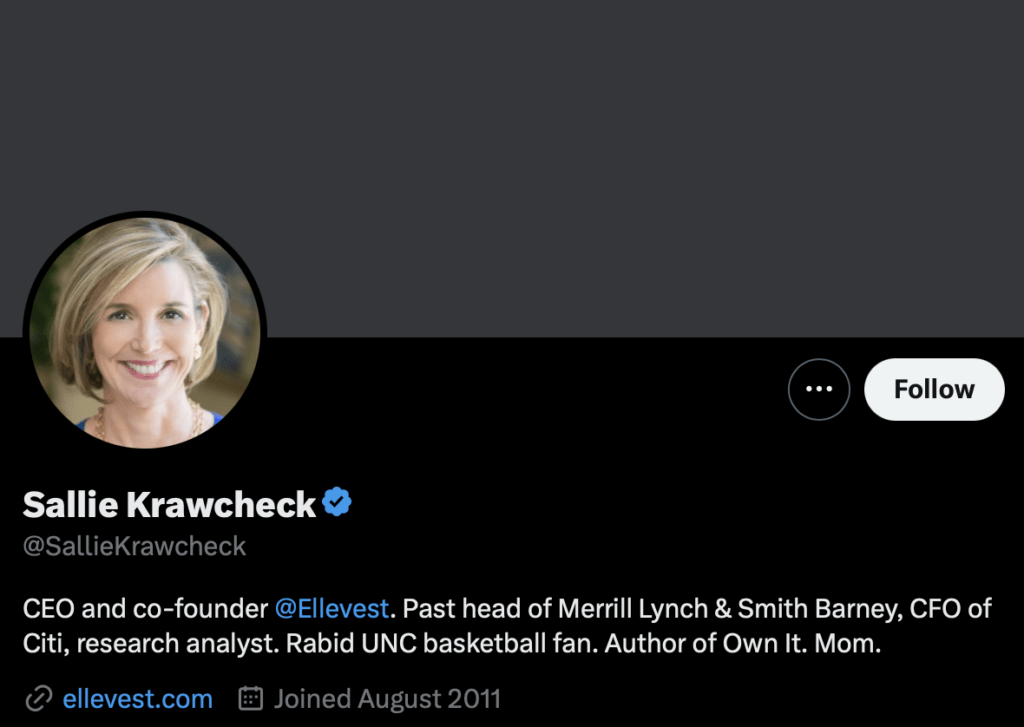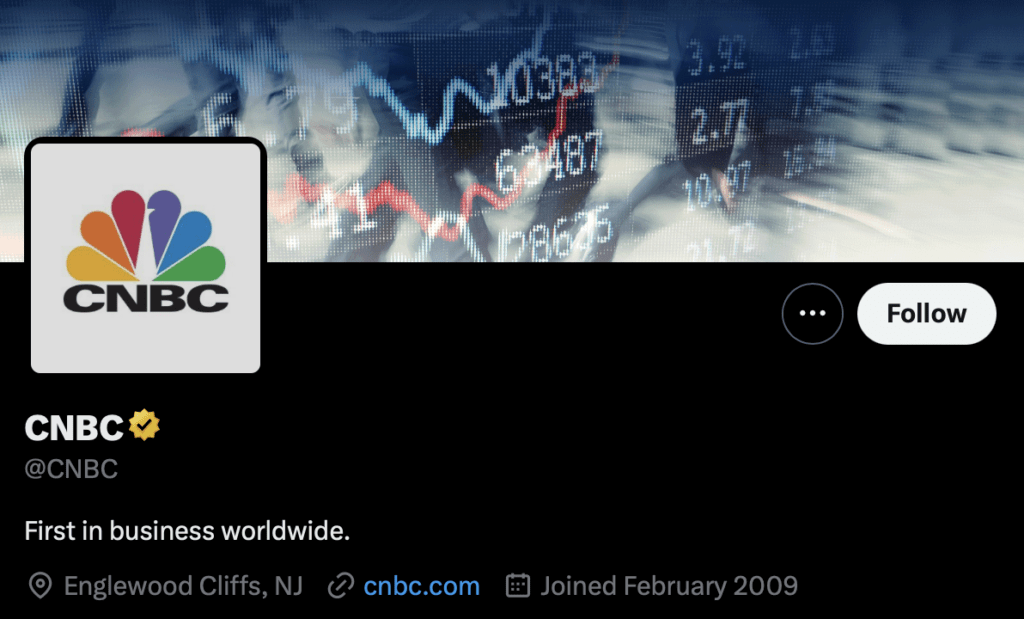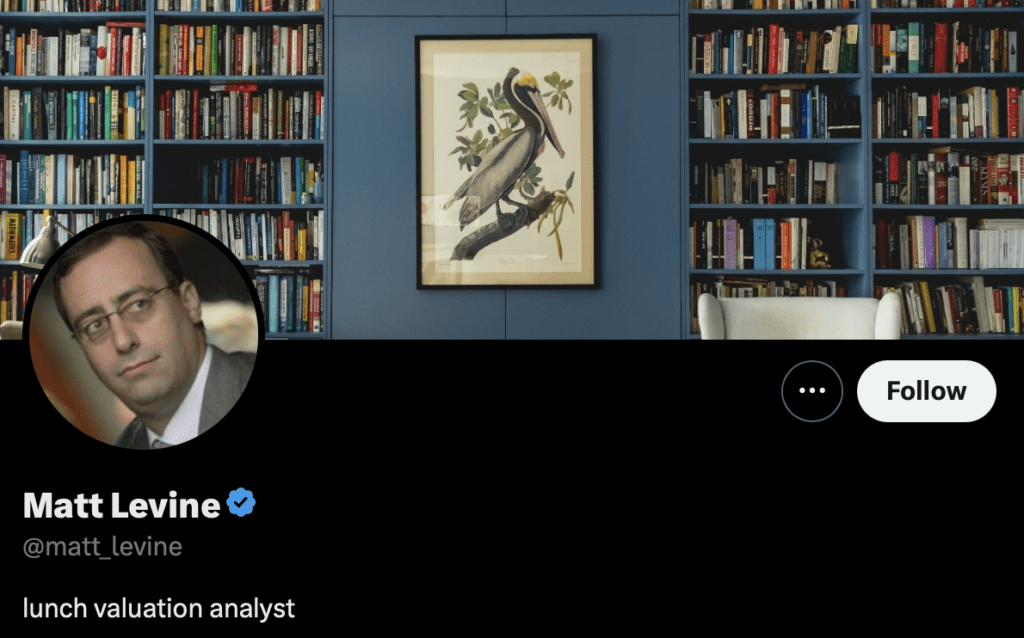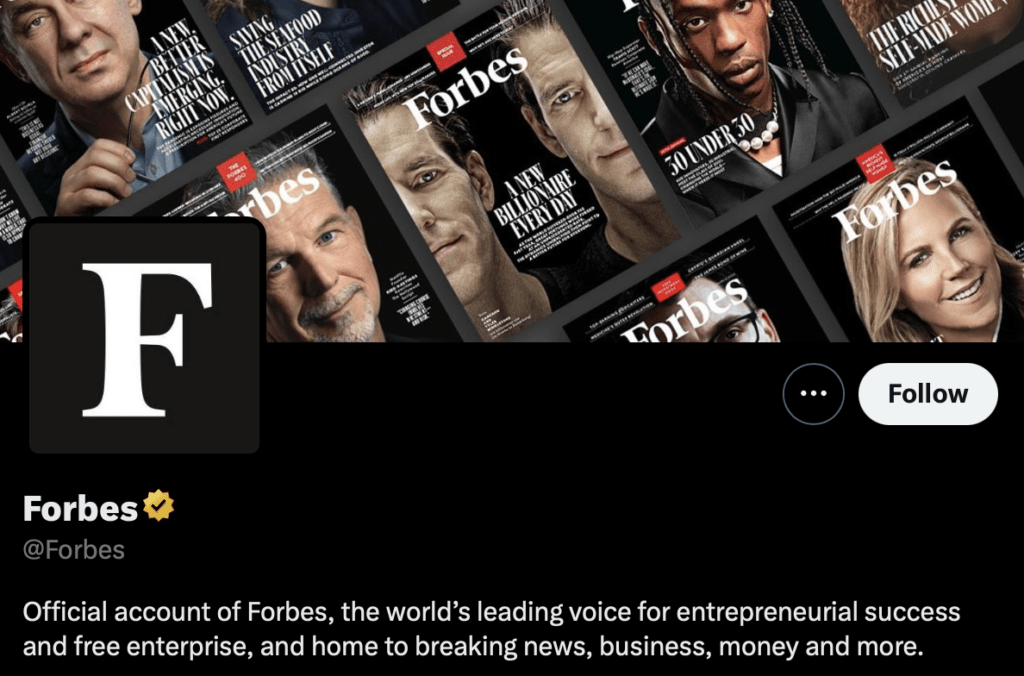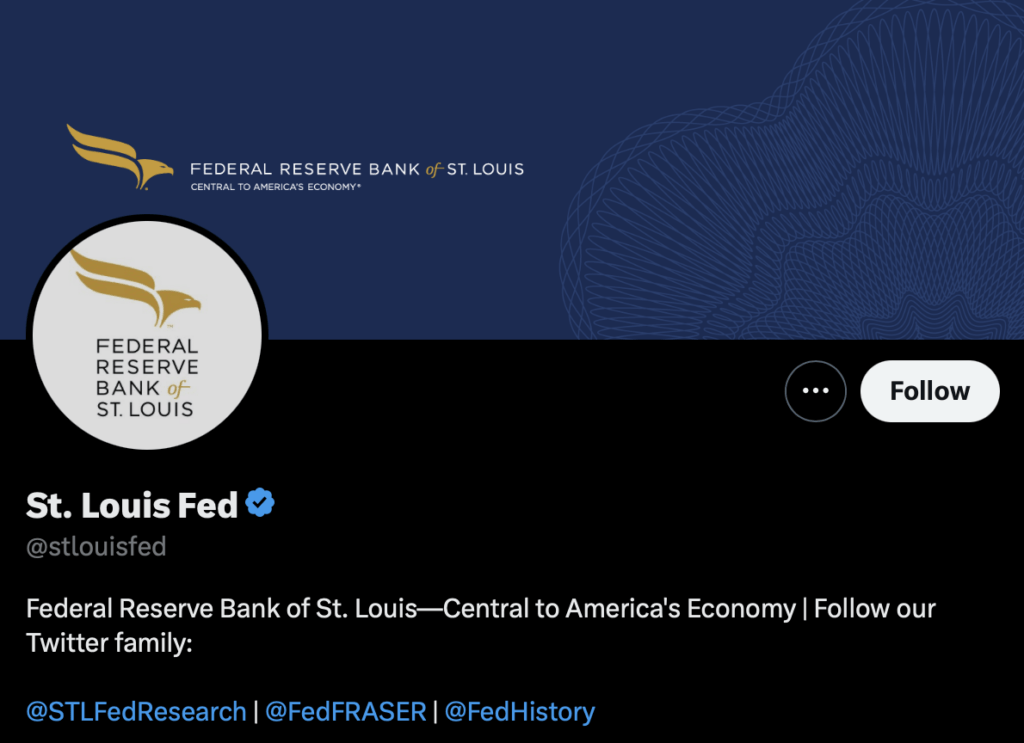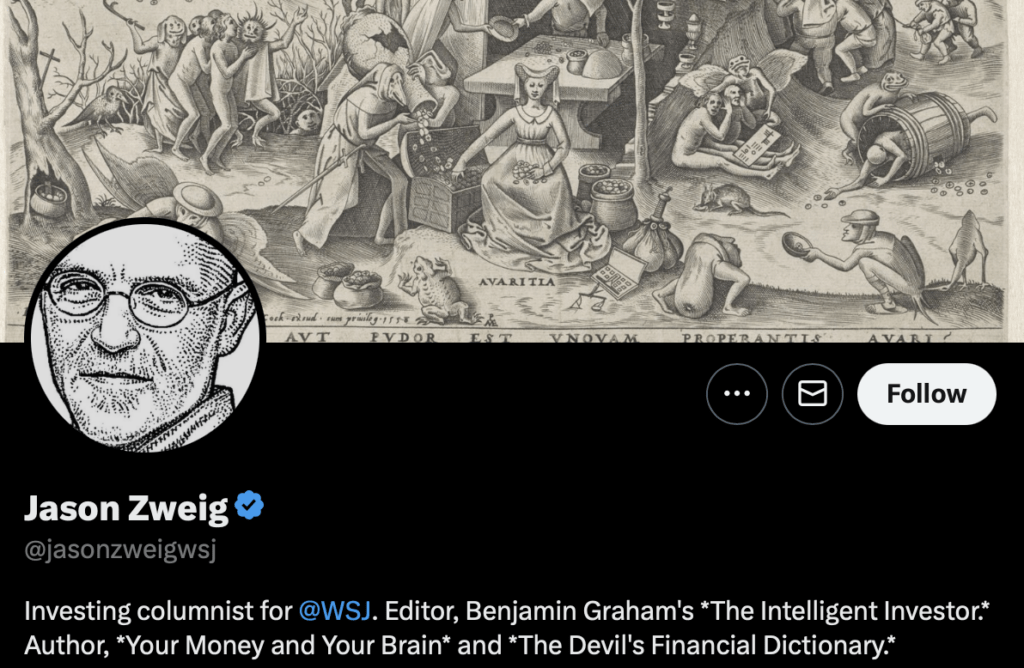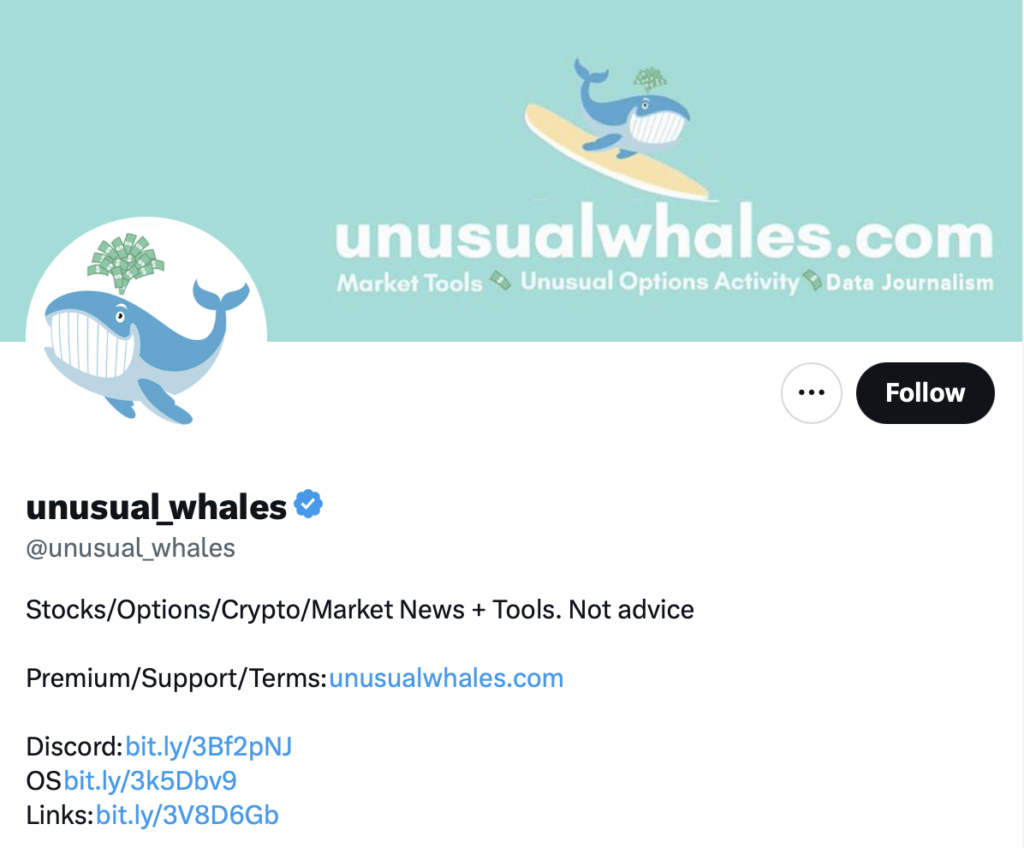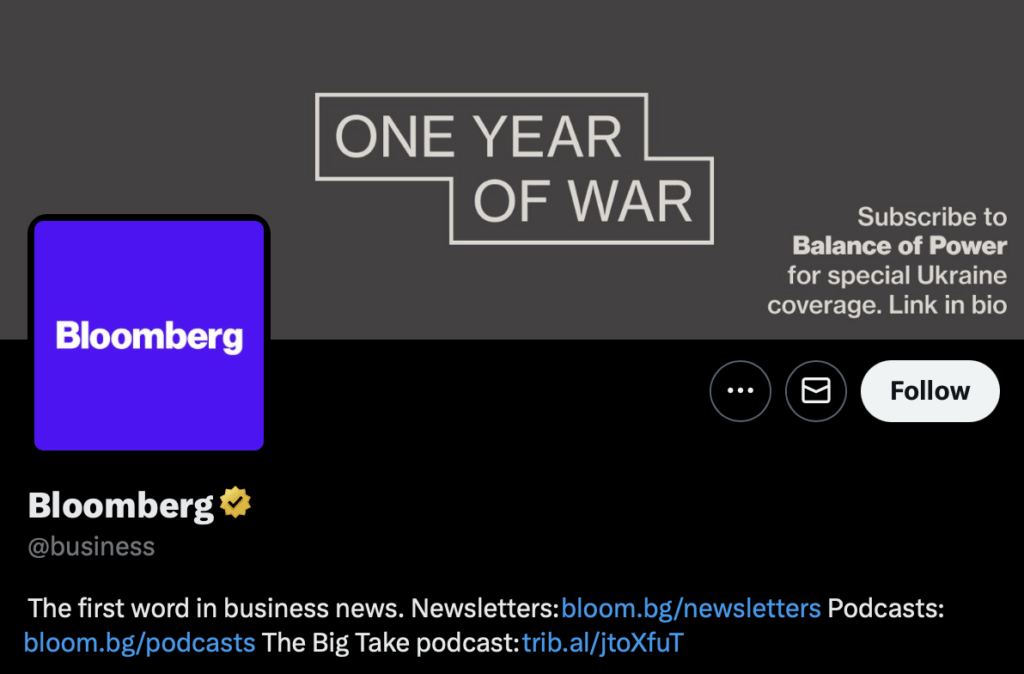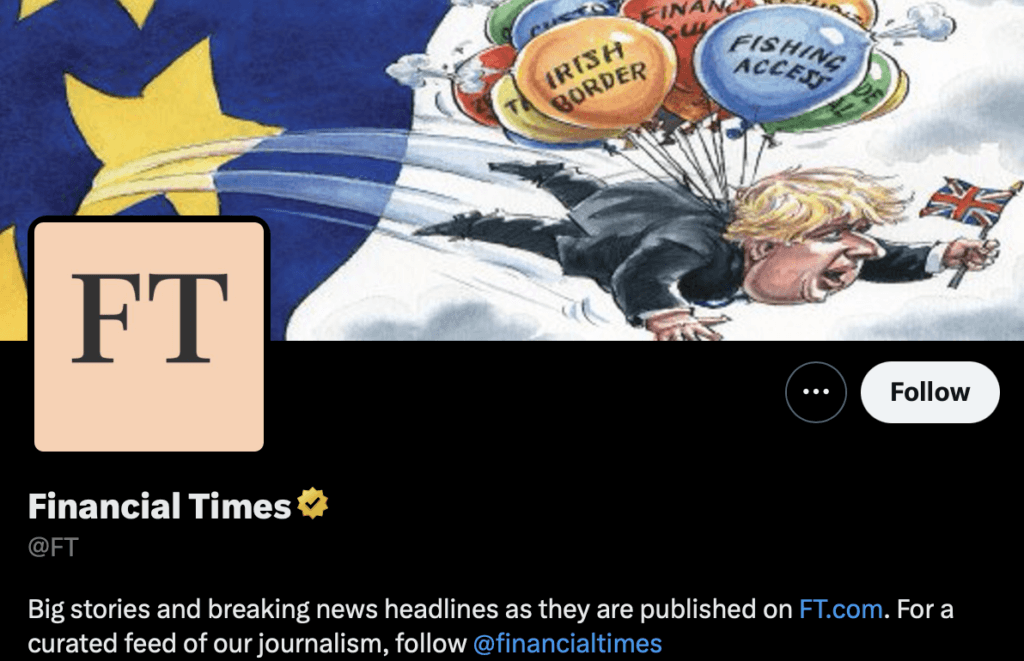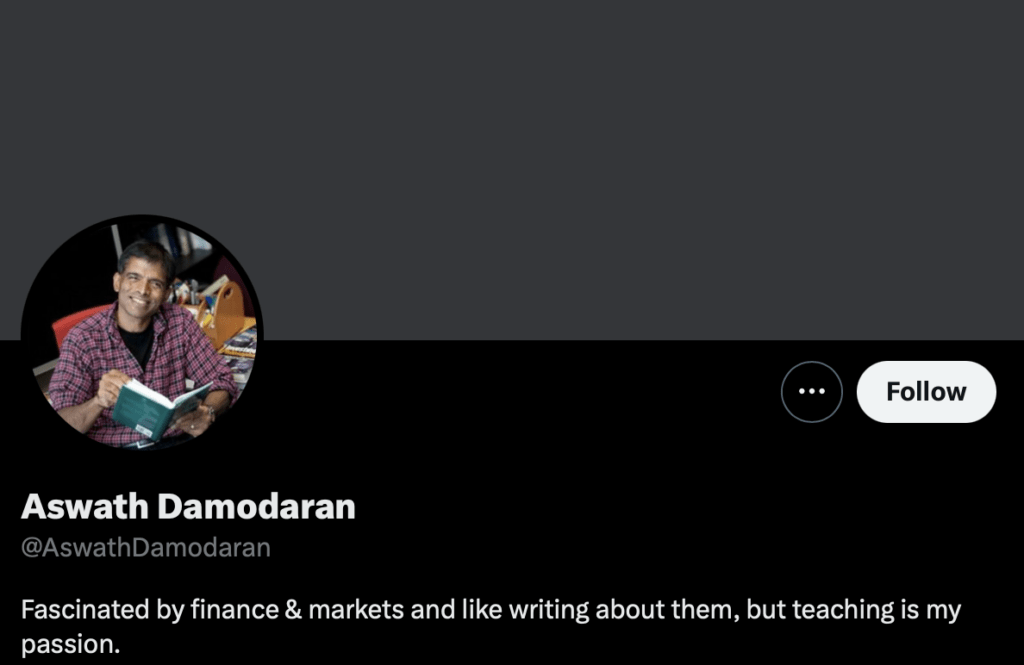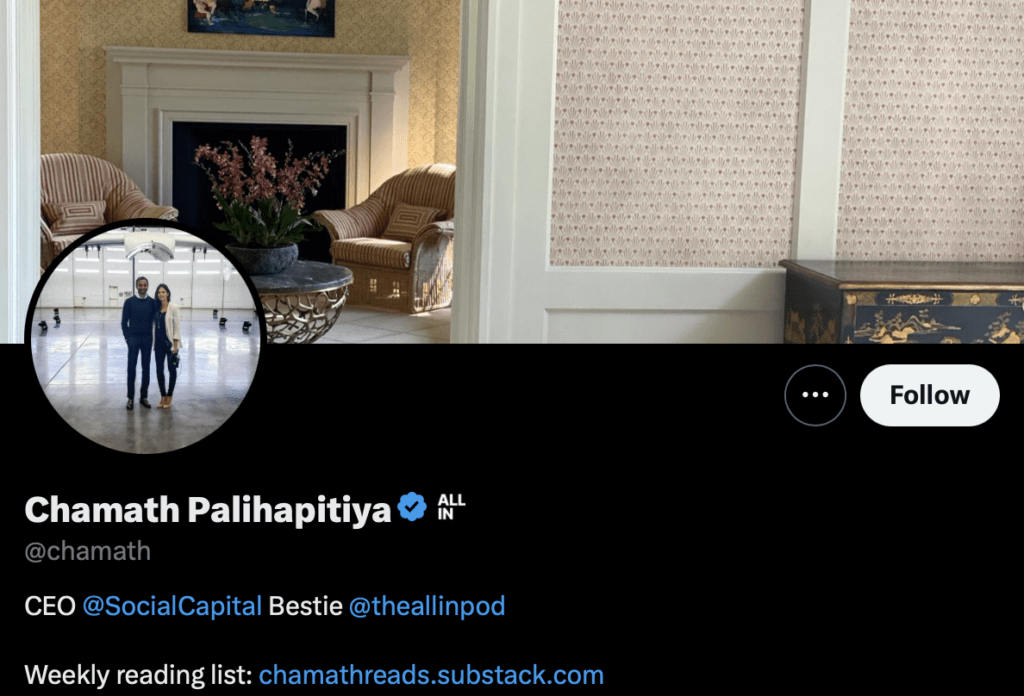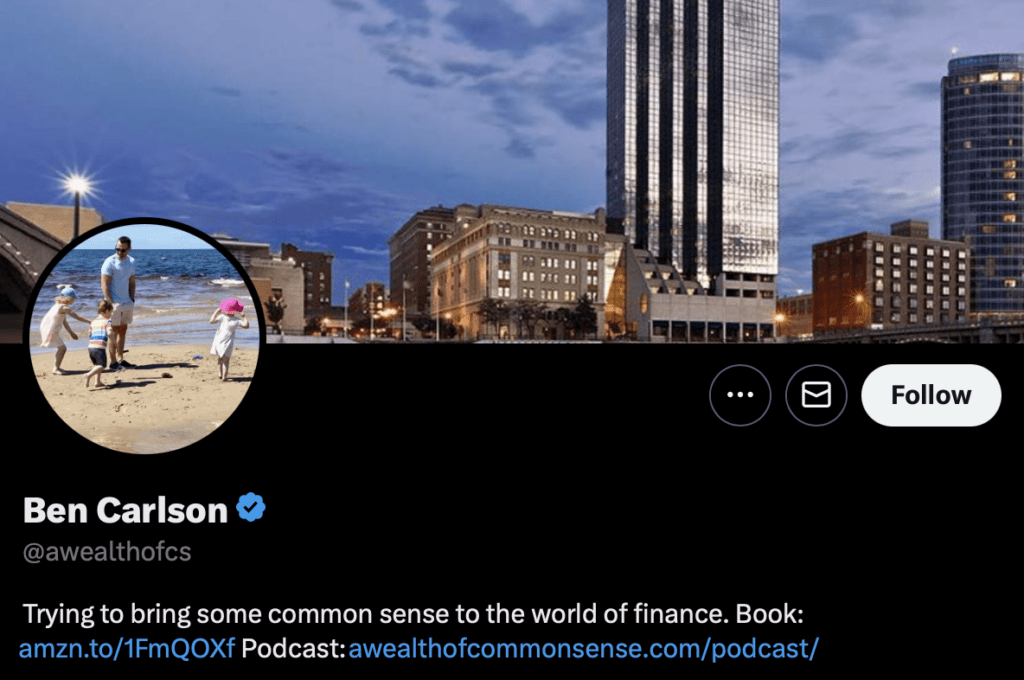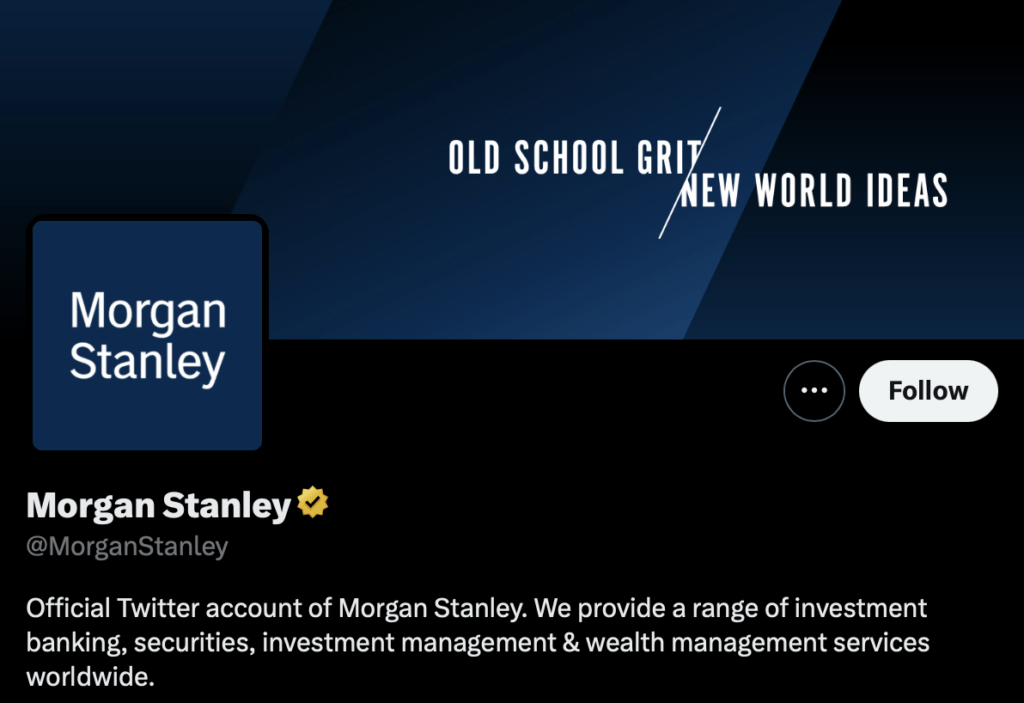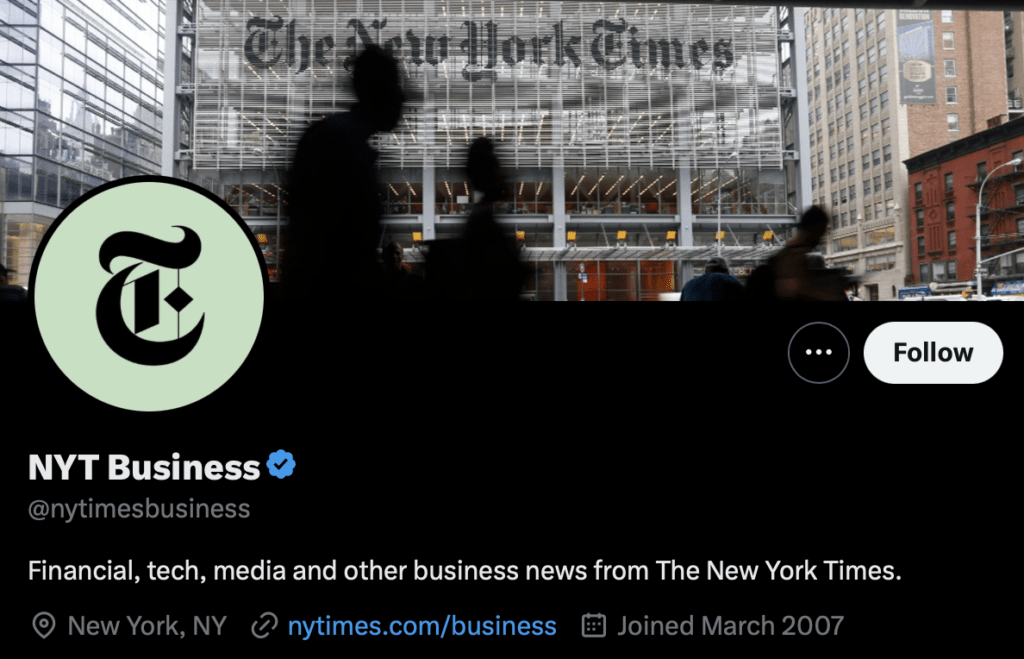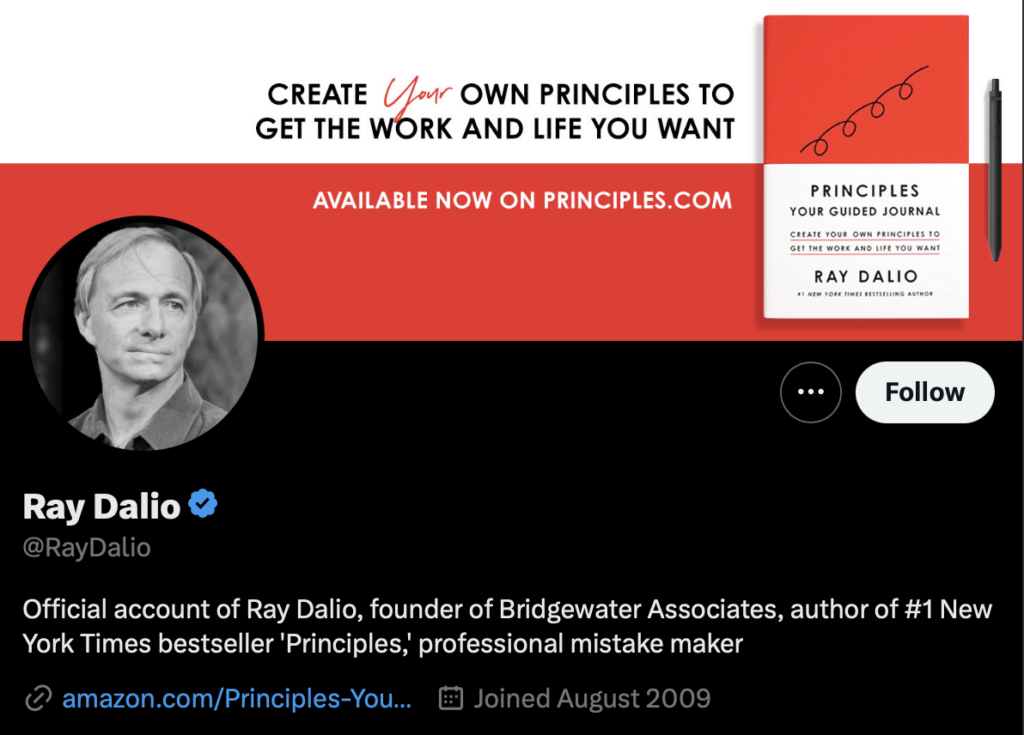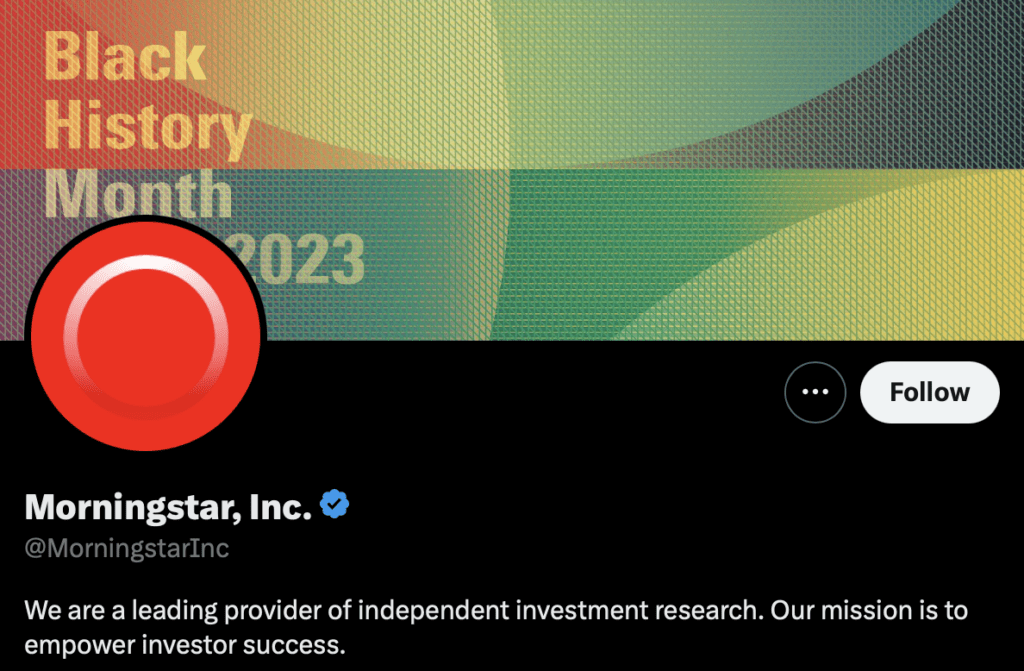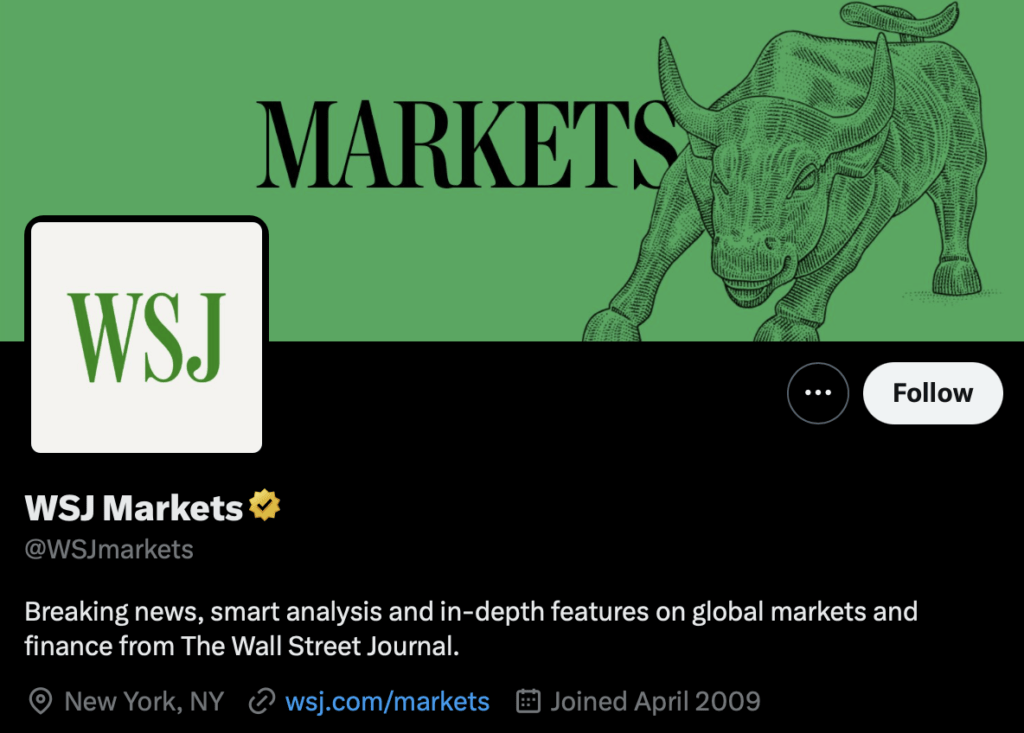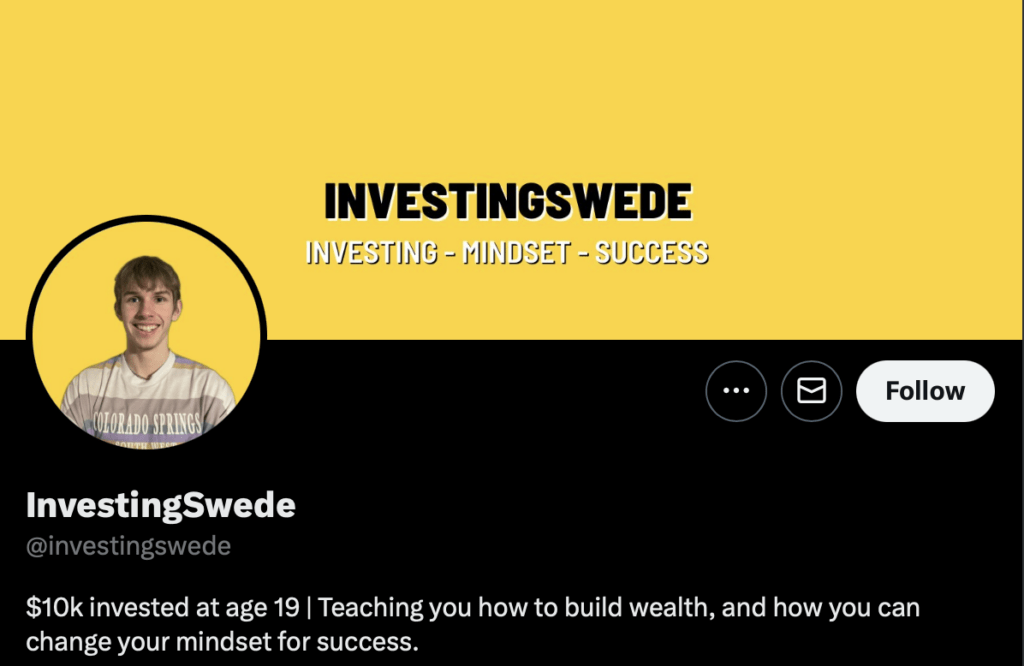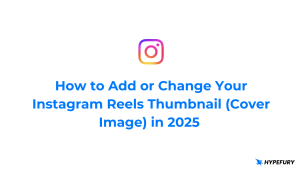There are thousands of finance-related accounts in all kinds of sub-niches in the Twitterverse. We’ve put together a list of the top people who consistently put out great content.
Finance Twitter is a wide definition — it can include everything from major institutional investment banks to indie fintwit influencers talking about personal finance.
In this article, we’re going to show you 27 top Twitter finance accounts.
For creators and brands in the finance and fintech industries, this is a list of accounts from which to draw inspiration.
But for those of you who are not directly involved in fintech or finance products, there are still lots of lessons to learn. These accounts provide a wide breadth of inspiration for aspects of your growth strategy — things like Twitter bio design, Twitter description, content strategy, and brand voice.
And there are very few readers who don’t care about money and wealth at all, so even if your niche is in a seemingly unrelated field, you might still find inspiration here that can be repurposed for your audience.
Table of Contents — Top 27 Twitter Finance Accounts
#2 — The Economist @TheEconomist
#5 — David Faber, CNBC anchor, and reporter
#7 — Liz Ann Sonders, Chief Investment Strategist at Charles Schwab
#8 — Barry Ritholtz, CEO of Ritholtz Wealth Management and Bloomberg View columnist
#9 — Matt Levine, Bloomberg Opinion columnist and host of the “Money Stuff” newsletter and podcast
#11 — Federal Reserve Bank of St. Louis
#12 — Jason Zweig, Wall Street Journal columnist and author of “The Devil’s Financial Dictionary”
#14 — Bloomberg Businessweek @business
#16 — Aswath Damodaran, Professor of Finance at NYU Stern School of Business
#17 — Joshua Brown, CEO of Ritholtz Wealth Management and CNBC contributor
#22 — The New York Times Business
#23 — Ray Dalio, founder of Bridgewater Associates
Top 25 Finance Accounts on Twitter
#1 — Justin Wolfers
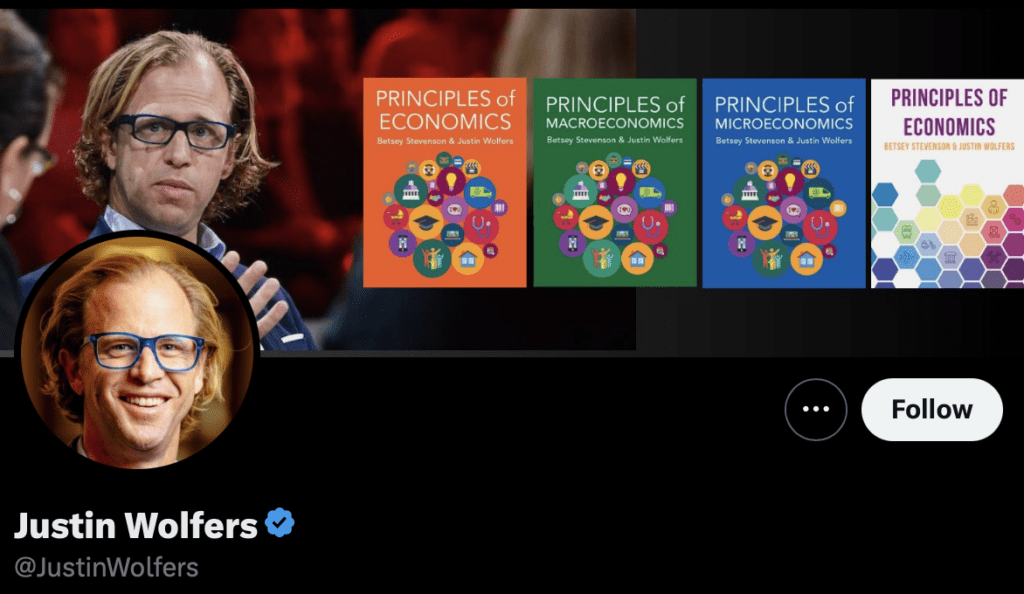 Justin Wolfers is a renowned economist and Professor of Public Policy and Economics at the University of Michigan. He is a prolific writer and researcher in the fields of macroeconomics, labor economics, and social policy, and is a frequent contributor to The New York Times and other media outlets.
Justin Wolfers is a renowned economist and Professor of Public Policy and Economics at the University of Michigan. He is a prolific writer and researcher in the fields of macroeconomics, labor economics, and social policy, and is a frequent contributor to The New York Times and other media outlets. #2 — The Economist
The Economist is a leading global publication covering news, politics, business, and finance. With a reputation for insightful and authoritative journalism, The Economist provides in-depth analysis and commentary on world events, markets, and economic trends.
#3 — Michael Batnick
Michael Batnick is the Director of Research at Ritholtz Wealth Management and the author of “Big Mistakes,” a book that explores some of the most significant investment mistakes throughout history.
You can take inspiration from Michael’s approach to pointing out mistakes — a classic hook for any great Tweet. People want to feel like they are getting secret knowledge about how to learn insider tips from pros.
#4 — Sallie Krawcheck, CEO and Co-Founder of Ellevest
Sallie Krawcheck is the CEO and Co-Founder of Ellevest, a digital investment platform designed to help women achieve their financial goals. With extensive experience in the financial services industry, including as the former CEO of Merrill Lynch Wealth Management, Krawcheck is a vocal advocate for women’s financial empowerment.
#5 — David Faber, CNBC anchor
David Faber is a market news analyst for CNBC. He covers financial news. You may be tempted to discount mainstream media pundits in favor of indie Twitter influencers, but it’s good to see what the more mainstream financial pundits are saying. They may be less inflammatory and full of hot takes, and reflect views on the world of money that are more reflective of broad sentiment.
#6 — CNBC
You can also check out the corporate accounts like CNBC. Now, the biography and design may not be the most inspiring, but this is because a big account like CNBC has built up brand equity on TV, on the web, and elsewhere over many years. You may find that some of their content can be repurposed with a better tone, and more direct style, and converted into a format that works for your audience.
Another strength of these accounts is that they are consistent — often posting dozens of times a day with full news articles and commentary.
#7 — Liz Ann Sonders
Liz Ann Sonders is Chief Investment Strategist at Charles Schwab, a bank and traditional financial services conglomerate.
Sonders provides valuable insights and analysis on the latest market trends — and one thing she’s really good at is sharing visual graphs. If you are looking for inspiration on consistently using visuals to do storytelling about data, check out Liz’s account.
#8 — Barry Ritholtz
Barry Ritholtz is a Bloomberg View columnist and the CEO of Ritholtz Wealth Management. Barry is more of your classic influencer and has a voice that resembles the world of Twitter influencers and podcasters more than the traditional world of television finance commentators.
Barry is really good at curating interesting and hooky content that can provide interesting storytelling around financial concepts and current events stories.
#9 — Matt Levine, Bloomberg Opinion columnist
Matt Levine is a Bloomberg Opinion columnist and the host of the “Money Stuff” newsletter and podcast.
Because he is a Bloomberg columnist, his approach is often to post and comment on his own articles. These articles get a lot of hits, but unless you probably want to do more Twitter-native content than Matt tends to do. That having been said, if you do have a web-based publication or blog/newsletter — you can learn from now Matt consistently reposts his own finance content on Twitter.
#10 — Forbes
Forbes gets a lot of flak — especially for its annoying full-page ads.
However, you can’t argue with an account with over 18 million followers (and counting). You will not necessarily be able to match the volume of arguably the biggest finance media brand in the world, but you can learn from their daily consistency and scan their articles for ideas that can possibly be repackaged for your audience in your own voice.
#11 — Federal Reserve Bank of St. Louis
I know what you’re thinking… boring!
But hear me out — whether it’s Wendy’s, Wal-Mart, or Ryanair, ‘boring institutions have definitely upped their game on Twitter and started to share more.
St. Louis Fed has consistently posted awesome data-driven analysis that resonates with hundreds of thousands of followers. They don’t have to do this. Their mandate is to set central banks and lend money to Wells Fargo — and other important but mundane things like that.
But that doesn’t mean they can’t leverage Twitter to build a brand! Remember that Twitter inspiration can come from anywhere.
#12 — Jason Zweig, Wall Street Journal columnist and author of “The Devil’s Financial Dictionary”
Jason Zweig is a well-known Wall Street Journal columnist and tends to repost and comment on his own articles, but he also is good at curating newsletters and other sources of financial information if they provide interesting commentary.
Jason is the kind of person who can give a boost to a very well-done indie newsletter or excellent graph if it tells a story.
His Twitter handle is also ‘@jasonzweigwsj’, which is kind of like getting a tattoo of your current employer — you may be confident that it’s your brand now, but remember that things change 🤣. Jason obviously has a lot of confidence that he’s found his soul mate with the Wall Street Journal and is making it handle-official.
#13 — unusual_whales
This is definitely an account you should check out. unusual_whales did something very basic, very simple, very easy to understand — but hard to execute. unusual_whales decided that they were just going to be the FASTEST poster of short summaries of new financial information.
They don’t necessarily have long-winded commentary. They don’t even really have long tweet threads. But they are able to grab press releases and major information right over the wire and get it out REALLY FAST.
If you think you might not be able to compete on verbosity and volume of content (there’s so much content out there…) consider what it might take to simply be the fastest to report on minute-by-minute happenings in your niche.
#14 — Bloomberg Businessweek
OK, back to a more traditional brand. We highlighted this one because they are a big brand and their call to action is decent. But really, we had to include them because of their handle: They’re all @business.
You may not be able to snag very common words, at least until Elon starts putting up a bunch of handles for auction, but consider whether you can find a way to brand yourself with a unique, recognizable handle.
#15 — Financial Times
Financial Times, also known as FT, is a leading global business news organization that provides real-time market data, analysis, and insights to investors and businesses around the world. With a team of expert journalists and analysts, FT covers the latest developments in the financial markets, as well as trends in politics, economics, and technology.
#16 — Aswath Damodaran, Professor of Finance at NYU Stern School of Business
Aswath Damodaran is a highly regarded Professor of Finance at NYU Stern School of Business. Known as the “Dean of Valuation,” Damodaran is a leading expert in corporate finance and valuation, and is widely recognized for his research and teaching on these topics.
#17 — Chamath Palihapitiya
#18 — Ben Carlson, Director of Institutional Asset Management at Ritholtz Wealth Management
Ben Carlson is the Director of Institutional Asset Management at Ritholtz Wealth Management (remember Barry Ritholtz?) and the author of finance guide Organizational Alpha. He’s got a really deep and esoteric knowledge of investing and a practical approach to sharing wealth management tips.
Remember, almost everyone wants to get common sense tips that are low-effort/high-impact in terms of their wealth, health, and lifestyle.
Ben Carlson is great at providing this kind of content and you can also check out his podcast for inspiration.
#19 — Morgan Stanley @MorganStanley
Morgan Stanley is a leading global financial services firm that provides a wide range of investment banking, securities, and wealth management services to individuals, institutions, and governments around the world. With a focus on innovation and client service, Morgan Stanley is committed to helping its clients achieve their financial goals.
#20 — Goldman Sachs
Goldman Sachs is one of the world’s leading investment banks, providing a wide range of financial services to corporations, institutions, and governments around the world.
#21 — BlackRock
BlackRock is the world’s largest asset management firm, with a focus on providing investment solutions to individuals, institutions, and governments around the world.
BlackRock, like instituations like McKinsey and Co. and others, is in the unique position of being not just a media company but an active player in the financial markets. As such, they have insights into financial trends that mere media companies might.
#22 — The New York Times Business
The Grey Lady’s business section . Mainstream media brand #1 New York Times Business is the business section of the New York Times newspaper, providing readers with news, analysis, and insights on the latest developments in the world of business and finance.
NYT Business covers a wide range of topics, including markets, technology, and personal finance. This is a good example of leveraging a parent brand to grow a sub-niche account. There’s the parent brand of the New York Times itself and NYT Business can piggy back off that.
You may not be running a 200-year-old newspaper, but you can check out design tips.
And hey, if you are in the front-end dev world, a fun fact is that a coder at NYT invented Svelte.
#23 — Ray Dalio, founder of Bridgewater Associates
Ray Dalio is the oracle of Connecticut. Somewhat of a doomsday prophet (but not really). Ray does a great job of making big, big macro preditions. His brand is virtuous cycle of promoting his Twitter presence, his hedge fund business, and his books on business principles and global economic cycles.
#24 — Morningstar
Morningstar is a leading provider of independent investment research, offering insights and analysis on mutual funds, stocks, and other investment vehicles.
Morningstar likes to lean on their brand of being ‘independent’ and providing unbiased and transparent information. While it’s really hard to be unbiased — and for some Twitter brands, being biased an stating your bias is actually a net win and a much better strategy, for some being the unbiased leader in a category can be a key part of a strong brand.
#25 — Wall Street Journal Markets @WSJmarkets
Wall Street Journal Markets, already mentioned earlier in this article, is the financial news and analysis section of the Wall Street Journal newspaper.
WSJ always ranks highly for breaking news on financial date and has a no-nonsense approach.
#26 — Credit Suisse
Credit Suisse is a leading global financial services firm, providing investment banking, wealth management, and other financial services to individuals, institutions, and governments around the world. With a focus on innovation and excellence, Credit Suisse is committed to helping its clients achieve their financial goals and succeed in the global marketplace.
#27 — Investing Swede
Let’s end with Investing Swede — back in the familiar world of indie Twitter influencers. @investingswede is a Twitter account run by an anonymous Swedish investor, offering insights and commentary on the world of finance and investing. With a focus on value investing and long-term wealth creation, Investing Swede provides readers with practical advice and thoughtful analysis.
Want to start posting for finance, fintech, and/or fintwit content? Check out Hypefury’s platform and get started today.



